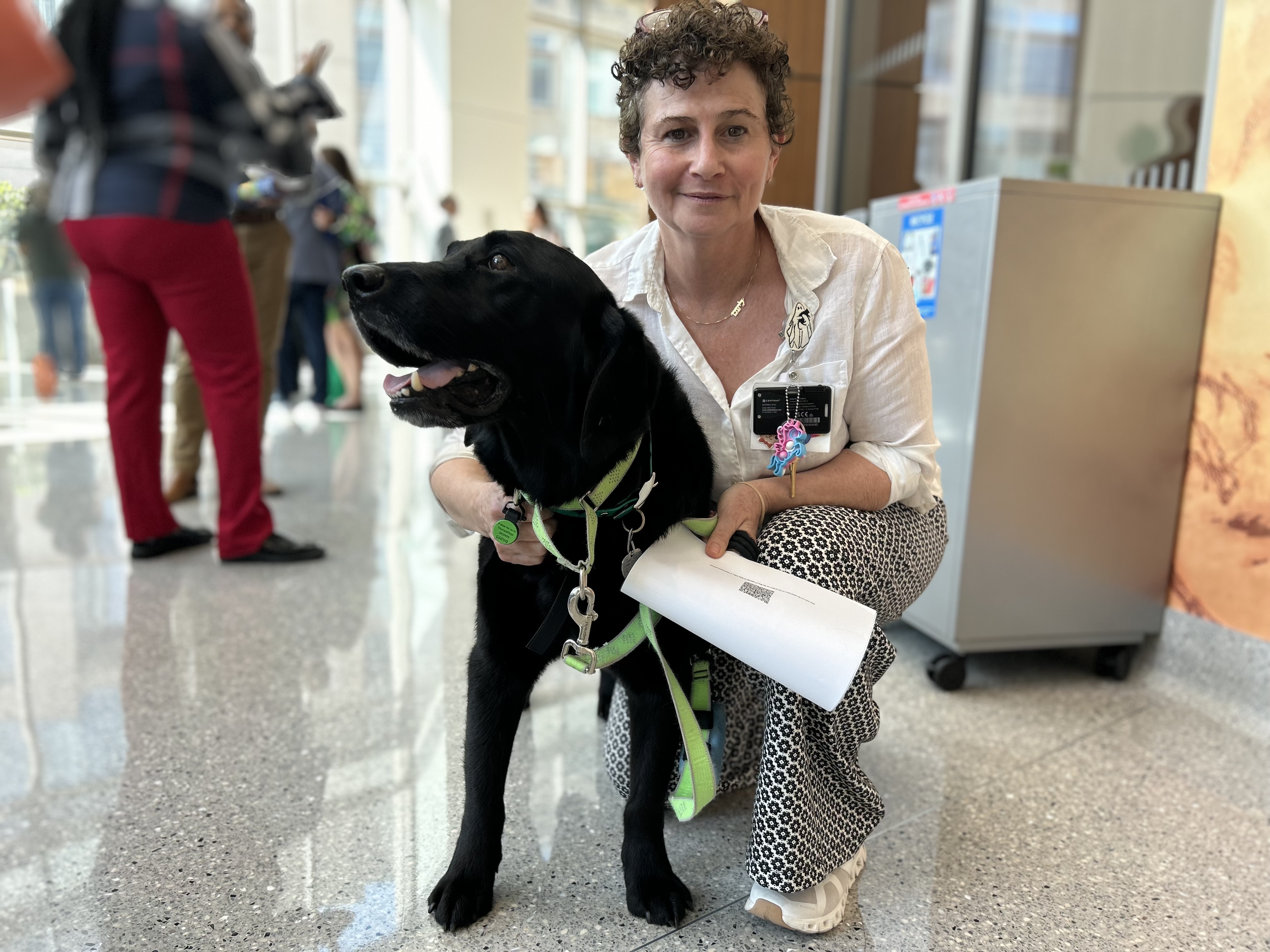Art and medicine are a powerful combination in the pursuit of health equity.
Emory University’s Rollins School of Public Health and Michael C. Carlos Museum recently hosted events as part of Healing Arts Atlanta,a multi-day initiative of Jameel Arts & Health Laband Performance Hypothesis. These events focused on art as a tool to address systemic racism and promote public health awareness and health equity.

Panelists speak at a collaboration hosted at the Rollins School of Public Health titled “Arts in Health Forum: Research & Practice.”
“Art is an incredible tool to address deep-rooted public health problems, including persistent health equity challenges,” M. Daniele Fallin, PhD, dean of the Rollins School of Public Health, said while emphasizing the promise that Atlanta holds during her opening remarks.
“Atlanta is at the forefront when it comes to using the arts for promoting healing and dismantling systemic barriers. This is an opportune place and time for this group of leaders to collaborate and craft new solutions for applying the arts to improving multiple facets of health,” Fallin added.
Rollins also hosted the launch event for Healing Arts Atlanta and a “Muscogee Arts in Healthcare” event focusing on the intersection of arts and health on Tribal nations. The latter was presented by Emory’s Center for Native American and Indigenous Studies and featured Rhonda Beaver, chief administrative officer for the Muscogee National Health Department, and Muscogee artist Bobby C. Martin as panelists.
The Carlos Museum hosted a call-and-response live event with celebrated author Lama Rod Owens and Grammy-winning violinist Melissa White that focused on arts and mindfulness. The High Museum of Art, The National Center for Civil and Human Rights,theDavid J. Sencer CDC Museum, and Buteco in Grant Park also hosted portions of Healing Arts Atlanta.
“By bringing artists together with Emory faculty, staff, and students; our greater Atlanta community; and national arts and health leaders, we collectively celebrate the healing power of art in public health research, teaching, and community practice and partnerships”, says Linelle Blais, PhD, associate professor at Rollins and executive director of the Emory Centers for Public Health Training and Technical Assistance, who took part in the event’s “Arts in Health Curriculum and Research” panel.
Carlton Mackey, assistant director of education, community dialogue, and engagement at the High Museum of Art and co-creator of Emory’s Arts & Social Justice Fellowship Program, discussed a photo series depicting and chronicling the life of his grandmother, who passed away two years earlier. Mackey’s grandmother had diabetes, and many of the photos captured her health care journey as she cooks in a kitchen with little bottles of insulin nearby on the counters. “Her diabetes diagnosis was as important of an aspect of how I understand her to be as it was to understand her as a person of faith,” he said.
Mackey has used this photo series in academic spaces to depict the significance that clinicians play in one’s life—and to show how that life looks outside of a medical setting. “Showing those images helps convey that doctors wield a much bigger impact than they think,” he said.
Other prominent panelists included Sunil Iyengar, director of research and analysis for the National Endowment for the Arts, and nationally-acclaimed poet Kayla Quimbley Young, whose spoken word, prose and poetry reflect her experience as someone who acquired HIV at birth.
“What happens at the intersection of arts and public health is amazing to behold because you have this pairing of two groups who want to know how to improve well-being for the general population in their own way,” said Iyengar. He shared that the medical community is starting to view artists as trusted messengers, referencing a collaboration between the CDC Foundation and a group of artists and culture partners to use their art to convey the efficacy of COVID-19 vaccines.

One of many event visitors convening in the atrium where Sean Black’s photo exhibition of “Stories of Triumph” was installed.
“It’s time for us to seize this moment and expand our ideas about how we incorporate the arts to advance public health and community well-being,” says Candace Meadows, director of strategic partnerships and initiatives at the Emory COMPASS Coordinating Center, who took part in a panel on “Artistic Genius and the Experience of HIV.”
“I look forward to what transpires within our Emory community after Healing Arts Atlanta and how we collectively engage to improve health outcomes locally, nationally, and globally. Creatively, we can.”

